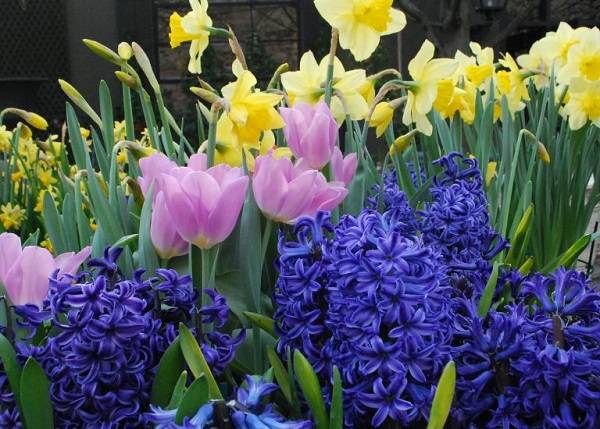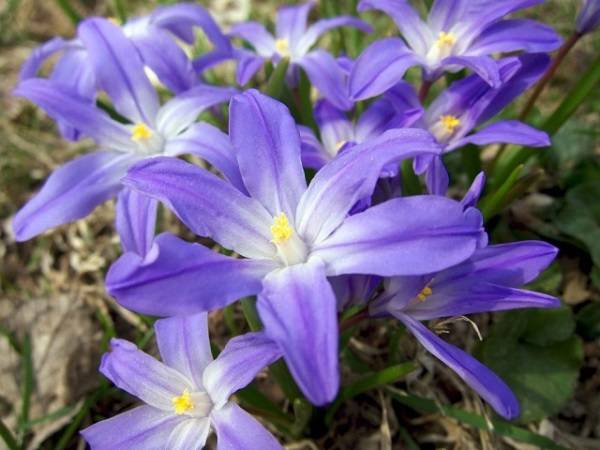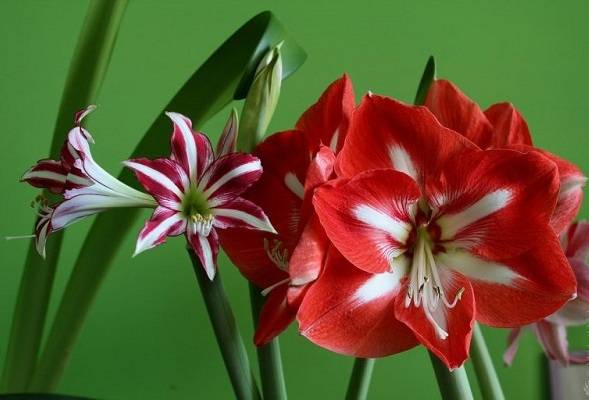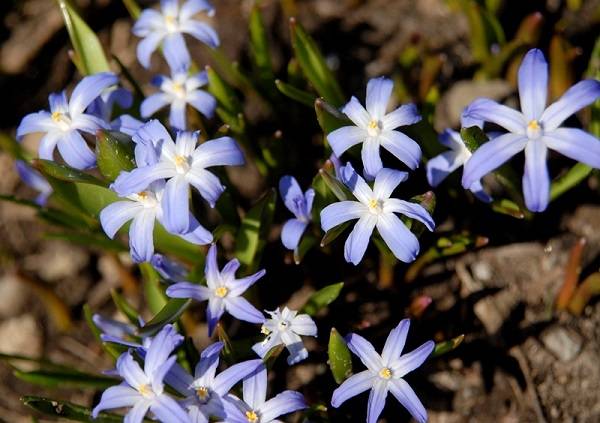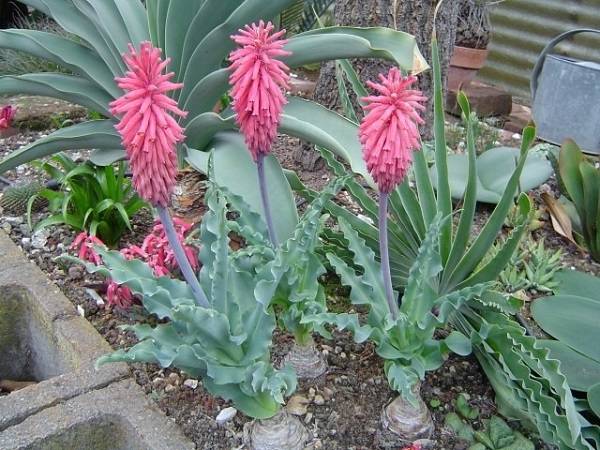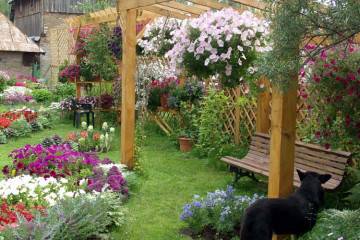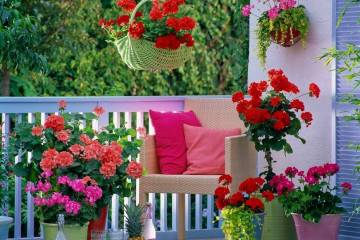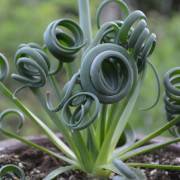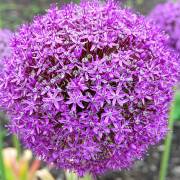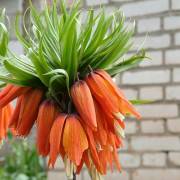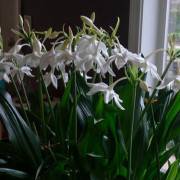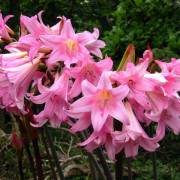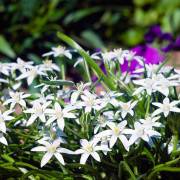Bulbous flowers for the garden and indoor plants
Content:
Bulbous flowers for the garden got their name from the thickened stem located underground and outwardly resembling a bulb. This thickening stores all the nutrients necessary for the normal growth and development of flowers. Among the bulbous plants there are garden plants that can be grown in the open field, and there are indoor flowers that can only grow at home.
Primroses
At the first melting of snow, bulbous primroses begin to gain growth. There are many varieties of them. They are the earliest plants to delight with beautiful flowering. For example, a blue scrub flower. The first buds are formed at the beginning of spring (in March). To decorate the site, it is worth making several plantings in the flower bed. There are other types and varieties.
Vesennik (erantis)
Another noteworthy plant. It has bright yellow flowers that look amazing against the background of the still unmelted snow. When planted in rows, it looks very nice, creating something like a forest clearing.
Muscari
Small flowers of bright blue color. They are grown both separately and together with other flowers, not necessarily blooming. It might just be green plantings. The care is simple and undemanding. They are characterized by fast growth. Flowering occurs in April.
Iridodictium
Decorative and small-sized bulbous irises. Herbaceous crops are perfect for them as a background. For example, rockeries, rock gardens. The effect of a "flower carpet" is created in the garden area. Bloom in late March.
Chionodox
The name is formed from two words, which literally mean "glory" and "snow". The flower grows well even when the snow is still covering the ground. However, he loves sunlight, so a well-lit, open area is a great place to grow. In this case, it begins to bloom with saturated purple flowers with a shade of blue.
Pushkinia
The plant stands out in two colors: blue and white. The opening of the buds takes place in the middle of spring, the flowers are pleasing to the eye until the onset of summer. The most interesting species for landscape designers are hyacinth and tree-like.
Bulbokodium spring
Another early primrose that begins to bloom in temperate climates in mid to late winter. Care is simple. Differs in high winter hardiness.
Tigridia
This bulbous plant is native to the southern and central America. However, it grows successfully in other, less warm climate conditions, keeping the exotic appearance given by nature. Easy to care for.
Anemone
Unlike the rest of the primroses, which are mainly characterized by blue, blue, white color, its flowers are of a rich red hue. They can be regular, smooth and terry texture. Flowering can also occur in autumn.
Flowers with narrow leaves
There are many varieties of narrow-leafed plants, including bulbous indoor flowers. All of them are distinguished by their decorative flowering and do not require complex maintenance.
Zephyranthes
This plant has long, elongated leaves that look like belts. It blooms like a crocus. Depending on the varietal accessory, it differs in a different color of flowers: red, pink, white. There are representatives with bicolor buds. The flowering period is year-round. Only 10 varieties are suitable for home conditions. More often only 5 are grown. Reproduction takes place with the help of daughter bulbs. Each specimen requires a transplant as it grows.
Hippeastrum
The most famous genus, which includes 90 species. This is the closest relative of the amaryllis. Homeland are the American subtropics and tropics. It stands out favorably with large bright red flowers. Comfortable ambient temperature from +17 to +25 degrees. Flowering occurs in August. The bulb is either round or cone-shaped. The ideal place for home growth is on the windowsill.
Spiral albuka
Representative of the Asparagus family. He has an unusual shape of leaves in the form of a pod. The length of the leaves is about 15 cm. In the unfolded state, it reaches 35 cm. When it is very hot outside, the flower curls up, as it were, into a spiral, thus retaining moisture. White flowers in the form of bells bloom on a high peduncle. A miniature onion with a diameter of no more than 5 cm is also white.
Crinium
From the Amaryllis family. The leaves are bent, which is why they look narrow. Suitable for southern regions, as it prefers a subtropical climate. Differs in long (90 cm) bulbs, and the leaves are even longer - up to 1.5 m. Inflorescences are pink or white in the shape of umbrellas. Crinium reproduces easily. Suitable for growing both as bulbous home flowers, and in the open field.
Ifeion
A perennial plant with blue flowers in the shape of a star with 6 ends. Belongs to the Liliaceae. Prefers only tropical or subtropical climates. Poorly tolerates low temperatures, so the tubers must be dug out for the winter. Even if the flower overwinters in the garden, it will still not bloom. Flowering occurs mainly in the spring. In the fall, new shoots form and grow. Bulbs for planting should be purchased at the end of August. If bought earlier, they may dry out.
Rodophiala
This is one of the rarest plants with a very beautiful flowering. Only 30 types are suitable for home use. It winters well, despite the warm homeland. Growing is not easy. During the absence of flowers, it is necessary to create cool conditions so that the flower grows normally and develops further. During the active period, a lot of light is required.
Iris dutch bulbous
Planting and caring for Dutch iris is not a particularly difficult procedure, so even a beginner can grow it. The height of an adult specimen is 60 cm.
Flowers with wide leaves
There are bulbous garden and indoor flowers with wide leaves. The most popular representative of this group is Drimiopsis. From a distance it is very similar to a lily of the valley, only its flowers are not bells, but small stars that change their color as they bloom. At first they are white, and then they take on a greenish tint.
Zantedeschia is another broad-leaved bulbous species. She loves moisture so much that even in natural conditions it grows near swamps and water bodies.
Bulbous perennials blooming in early spring
At this time, many bulbous plants bloom. Below is a description of the most common.
Galanthus
Better known as snowdrop. It begins to bloom literally "under the snow", long before it melts. There are both white and greenish-white varieties.
Crocus or saffron
In the climatic conditions of the middle zone, the spring crocus blooms from March to April. Flowers can have a wide variety of shades - purple, lilac, yellow, white, lilac. A variety of saffron is also a golden crocus, which has even more colors than spring.
Chionodox Lucilia
This flower thrives in shaded areas. Sunny open beds are generally contraindicated for him. Chionodoxa is a winter-hardy plant, so its bulbs do not need to be dug out of the soil every year. Full flowering of a perennial begins a couple of seasons after planting.
Lilies
In addition to their decorative appearance, flowers have medicinal properties. The best time for disembarkation is autumn. Lilies are easy to care for. They need to be fed, maintaining a certain time interval between fertilization. For the first time, additional nutrition is introduced in early spring when young shoots appear. Fertilizer with potassium and phosphorus is suitable.
Bulbous plants grown only in pots
In addition to the narrow-leaved flowers that can be grown at home, there are a few other bulbous houseplants that should be included.
Gemantus
The genus has more than 40 varieties. All of them are distinguished by bright colors, which can be both orange and red. The flower period lasts from July to August. Hemantus is grown in bright and diffused lighting. Comfortable temperature for him is + 18-22 degrees.
Kislitsa
The plant got its name due to the taste of its leaves. In nature, there are about 800 varieties of oxalis. They began to grow it as a house plant a long time ago, back in the 17th century. Also suitable for open ground. In Russia, the flower is known by the name given by the people - "hare cabbage". Absolutely not picky in leaving.
Oxalis grows in large quantities in the subtropics and tropics. Decorated with pink, white flowers and rich brown foliage. Flowers can be lilac.
Weltheimia
Bulbous perennial arrived from southern Africa. He has a rather original form of pink flowers in the form of narrowed bells. They also look like fireworks. The temperature, comfortable for growing, ranges from +10 to +14 degrees. An ideal plant for a winter garden, greenhouses, where a cool climate is maintained.
Examples of bulbous flowers are typical, popular representatives
An analogy can be drawn with the onion culture. It is colored light yellow, white and dark orange. Accordingly, flowers of such colors can be attributed to the bulbous culture according to the classification criterion "color". The most common example is yellow tulips. The shape of their tuber is not always, of course, similar to a perfectly even onion, but they are very close in color. Tulips can also have another color characteristic of the onion culture - white. Many of the above plants have the same colors.
Bulbous crops are diverse. Among them there are perennials wintering in the open field, and those whose bulbs need to be dug up for the winter. There are also those that are grown in extremely warm climates or at home.In any case, a representative of the bulbous will be able to decorate a permanent place of growth with proper and often uncomplicated care. Sometimes several varieties are planted, blooming at different times. The result is an amazingly beautiful planting, similar to "flower carpets".
